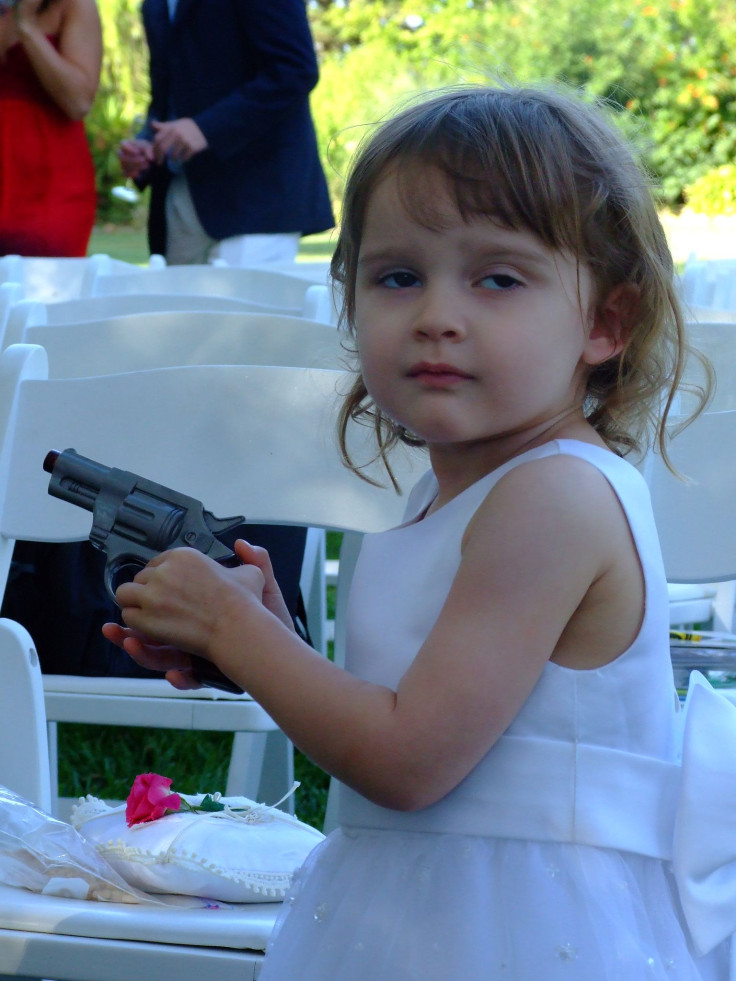Child Gunshot Wounds Most Likely In Homes With Firearms; Arkansas Leads Nation With Unlocked And Loaded Guns [Video]

Even among rural Americans, parental attitudes run heterogenous on the topic of gun safety and children: Locked or unlocked, loaded or unloaded, and just how close should kids be to firearms? Whereas some parents in multiple-gun households teach firearm safety to toddlers, others forbid their children from playing with toy guns, or even pointing an index finger to mimic one.
Christi Parenteau Martin, a 36-year-old mother of four from Cabot, Vt., says she supports gun-owning parents who teach their children to handle firearms with care.
“I think as long as a child is taught properly about guns and gun safety, and they take the hunter safety course, you should have no problems,” she told Medical Daily. “A child should be properly watched at all times if they’re using a gun, and if a gun is not in use they should be locked up in a gun vault — so there’s no chance a child could get to a gun without parental supervision.”
Somewhat less enthusiastically, 42-year-old mother Barbara Cerf, of San Diego, describes herself as “anti-gun” but says her husband, with a background in the U.S. Navy, stores several handguns in a locked safe, and plans to teach their son to fire a weapon — someday. “I can only argue with the age that I find reasonable,” she said, referring to their son, who still wears diapers.
A new study from the American Academy of Pediatrics, however, shows a significant link between gun ownership and gunshot wounds among children, independent of attitudes toward firearm safety and whether guns are locked and loaded.
Presenting at the Academy’s national conference in Orlando Sunday, a pair of researchers from Harvard University and the University of Michigan say they’ve found a significant link between the percentage of gunshot wounds among American children and the percentage of households with guns, period.
Nationwide, gunshot wounds send some 7,500 children per year to the hospital, with 500 deaths, a rate that increased from 4,270 to 7,730 hospitalizations between 1997 and 2009. During that time, deaths rose from 317 to 503.
"Handguns account for the majority of childhood gunshot wounds and this number appears to be increasing over the last decade," lead investigator Arin L. Madenci, of Michigan, said in a statement. "Furthermore, states with higher percentages of household firearm ownership also tended to have higher proportions of childhood gunshot wounds, especially those occurring in the home."
Among American households with children, rates of gun ownership — locked or unlocked, loaded or unloaded — ranged from a low of 10 percent in New Jersey to 62 percent in Montana. In Massachusetts, only 1 percent of parents left guns loaded in the house, compared to 14 percent in Arkansas. Massachusetts parents leave guns unlocked in only 1 percent of households compared to a high, again in Arkansas, of 7 percent.
In reviewing statistics from a total of 36 million pediatric hospital admissions, Madenci and his colleague Christopher B. Weldon concluded the rate of gunshot wounds among children might be lowered by reducing the number of American households with guns, rather than merely focusing policy on the debate over semi-automatic weapons.
Policies designed to reduce the number of household firearms, especially handguns, may more effectively reduce the number of gunshot injuries in children," Madenci said.
Hogwash, say many ardent defenders of not only their interpretation of the Second Amendment but of pure, apolitical enthusiasm for the sport of hunting and all manner of firearms. In a country that loves McDonald’s, gun retailers outnumber the world’s leading fast-food brand by a 2 to 1 ratio, with nearly as many shops as gas stations, according to research conducted by ABC News.
Charles Lionel Bachand IV, or “Chuck” as he’s known down to the gun shop near Main Street in Island Pond, Vt., says familiarity and education breed safety. “I think the real safety is education more than locked weapons," he said during a telephone interview. “I’m not a fan of needing to triple-lock your firearms — we have guns all over the house and the kids pay them no mind.”
Bachand, 32, says both of his young children first learned to shoot a “longarm” by the age of three, supervised and assisted, of course. On her fifth birthday, his daughter Lilly received a pink .22-rifle, a weapon looking vaguely like a Barbie accessory from Mattel. “They know what they can do and with that exposure and education [guns] become just another tool in the tool shed.”
Below, "Barry L." reviews gun options for young children in a video uploaded to YouTube one year ago:



























